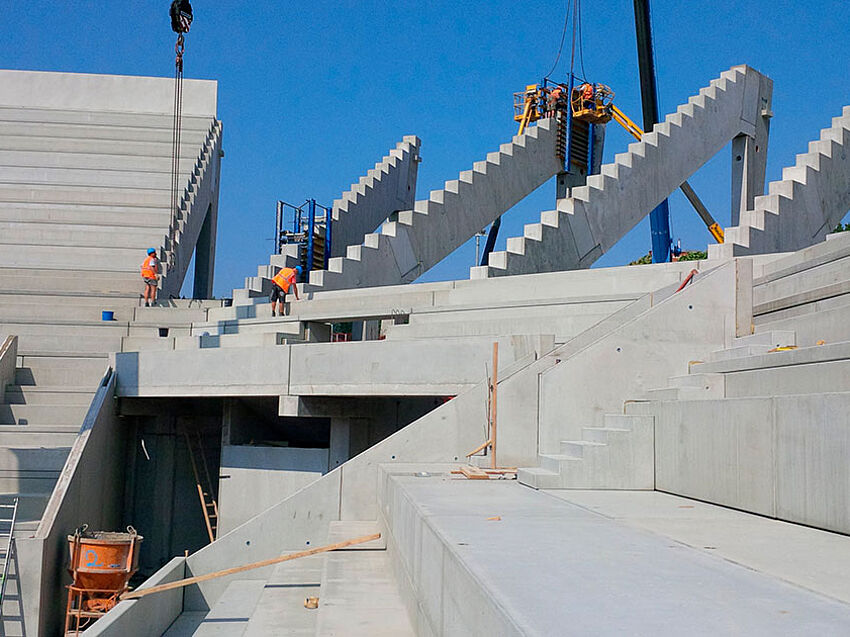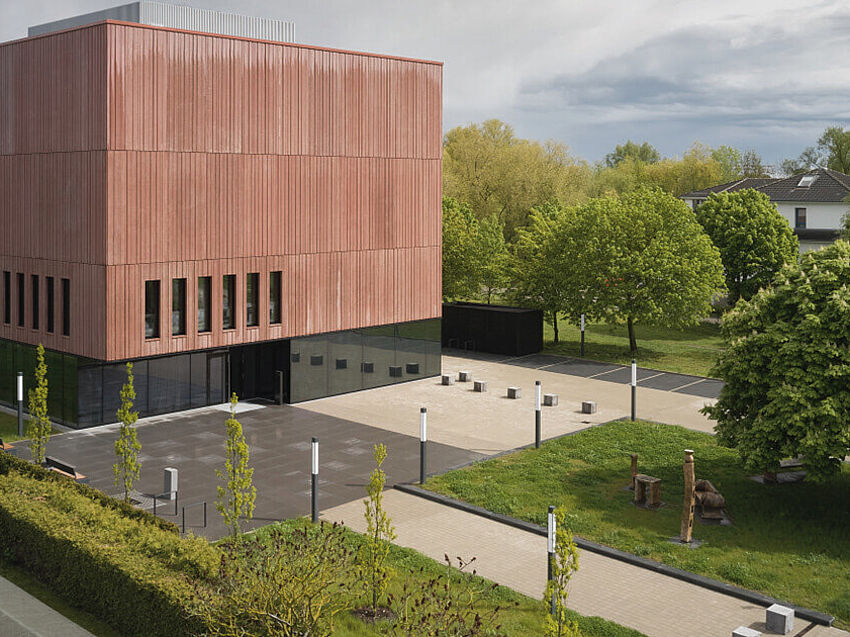Artificial intelligence, automation, and sustainable construction were the main topics of this year’s Engineering Days. From 26–27 November, more than 43 exhibitors, 36 speakers and workshop leaders, and a total of around 360 experts from the precast concrete industry met in Salzburg. Keep reading for the most important insights on AI and digital trends in precast from this informative event.
Precast industry cautiously optimistic about 2025

“We have to build the future we want to live in tomorrow and think about it today. Future Building means that the future belongs to those who are willing to radically rethink everything today and who are able to network with like-minded people.” With these thoughts, Dipl.-Kfm. Christian H. D. Haak provided the initial impetus for successfully managing change processes. The specialist in strategic transformation made it clear that “embrace change” is not an empty slogan, but that change should be an essential part of every corporate culture in order to remain fit for the future. The management consultant encouraged the participants to actively shape the future, take action, and lay the foundation for tomorrow‘s success today.
What opportunities does AI offer the construction industry?
Next, Prof. Dr.-Ing. Markus König explained how AI solutions can make construction processes more efficient, reduce costs, and increase planning reliability. At the beginning of his presentation, the professor from Ruhr University Bochum gave a brief overview of the development of AI:
> AI: programs that learn and think like humans or make decisions based on probabilities (from around 1950)
> Machine learning: algorithms with the ability to learn without being explicitly programmed (from around mid-1980)
> Deep learning: learning with artificial neural networks that require extensive training data (from about 2010).
Markus König then presented some practical applications relevant to the construction industry:
> Construction: Using machine learning methods to support construction planning, update construction processes, perform quality assurance, monitor progress, or even contribute to construction documentation.
> Construction site safety: Detecting potentially dangerous situations, such as people walking in front of a loaded crane, lack of helmet use, etc.
> Inventory modeling: Using AI to evaluate asset information and generate asset models.
> Damage detection: Detecting and classifying surface damage, such as cracks.
At the end of his presentation, Prof. König invited the participants from the business world to share the existing data with the scientific community, as AI processes require a large amount of high-quality training data.

How AI improves BIM design
Stefan Kaufmann then used examples from BIM design to show what is already possible with the help of AI. ALLPLAN’s AI expert presented numerous practical examples:
> Facilitating access to construction knowledge: Such as through chatbots, questions about the benefits of software, applicable standards and guidelines
> Optimizing information management in projects: With easier searching for project data, reduction of data silos through better BIM management
> Creating content: By generating images, visualizations, and complete plans, reconstructing buildings in 3D, or predictive design
> Optimize design: Helping to reduce materials, save energy, reduce costs, reduce climate impact, and improve design quality

An impressive example is the AI Visualizer, which creates visualizations in seconds. It has no additional system requirements because the images are generated in the cloud. The tool provides inspiration at various stages of the design process, both for visualizing architectural styles and for displaying furniture, materials, interior and exterior views, different climates, and much more. It allows users to create high-resolution images from low-resolution images and produce high-quality renderings.

AI for automated creation of environmental data for building products
Lisa Oberaigner then explained why EPDs are so important for building products and how they work. According to the founder and CEO of EMIDAT, there are three main reasons to start working intensively on Environmental Product Declarations (EPDs) today:
1) More and more customers are actively asking for environmental data. It is important for construction companies to be able to answer the growing number of questions efficiently and reliably.
2) Life cycle assessments are already a requirement in many public tenders.
3) In the near future, more and more environmental data will have to be published. For example, the EU’s Construction Products Directive stipulates that any CE-marked construction product will soon need to be able to provide verified environmental data.

The expert addressed various challenges for building material manufacturers in terms of data collection and presented solutions for an efficient process.
What is often forgotten in digital transformation: the human factor
The human factor in digital transformation was the focus of Susana Jimenez’s presentation. The HR expert and founder of Aprofitalents emphasized the importance of taking fears and concerns about change seriously and talking about them. An appreciative feedback culture can significantly increase the adaptability of employees. Expectations are clarified, misunderstandings are resolved, and trust and transparency are fostered. This enables leaders to confidently and successfully lead their teams through change, even in times of transformation.

There is only one way: forward
AI is currently a limited tool and cannot yet replace human expertise and decision-making. However, it can already accelerate many steps in the construction process, take over routine tasks, and provide quick visualizations. This webinar summarizes the opportunities that AI can bring to civil engineering.




